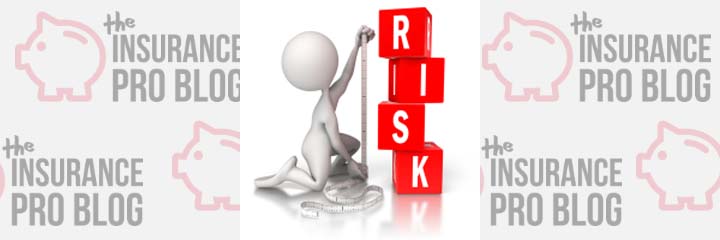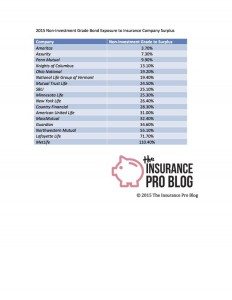Choosing a whole life insurance company’s product as a place to store cash requires a deeper understanding and trust in the company’s ability to care for your money. There are a multitude of metrics that we look at when we select a company for a client and these various metrics help us measure risk faced by a policyholder; this risk touches on multiple considerations mostly concerned with continued operational success.
Some of the metrics we use worry about continued success through mitigating the risk of negative economic considerations or operational losses be they business losses or investment losses. Today we’ll discuss one metric that focuses exclusively on investment risk loss.
Non-Investment Grade Bonds Relative to Surplus
Before we identify this seemingly straightforward metric, allow me to lay out a few important (and nuanced) definitions.
Investment grade bond does not mean the same thing here as it would in the world of traditional investment finance. This definition is dictated by a cutoff established by the National Association of Insurance Commissioners (NAIC). A bond falls into non-investment grade territory in the eyes of the NAIC long before it falls into non-investment grade territory under traditional finance parameters.
Surplus is the amount of asset values held by the insurer that exceed reserves for life insurers, reserves are a liability that are held to cover the expense of a claim (i.e. pay a death benefit in the case of a life insurer).
I wanted to make this distinction to note that while most moderately experienced investors understand that a non-investment grade bond is a “junk” bond, that is not necessarily the case here (in fact it’s highly unlikely the case).
The Importance of this Metric
NAIC defined non-investment grade bonds do pose a higher degree of default risk than NAIC defined investment grade bonds. It therefore follows that the larger the percentage of non-investment grade exposure relative to surplus, the more at risk an insurer makes its cash safety cushion.
This consideration is even more important for mutual life insurers as they do not have access to traditional capital markets since they cannot sell equity shares of the company to raise capital. Instead mutual companies rely much more heavily on surplus positions to provide capital for operational expenses should current cash flow fall short of operational expenses.
Mutual insurers can also use a financial product known as a surplus note to provide for capital needs, these are debt instruments issued by the insurer to raise capital.
The Results
The following data comes from Ebix Vital Signs and here is the chart listing carriers non-investment bond exposure relative to their surplus positions (click to enlarge):
The average among the group is 31.61%. The percentage listed for each company is the amount of that company’s surplus that would be effectively lost if all non-investment grade bonds were to default, which is a very unlikely event but still an important piece of information.
Several other Factors to Consider
As usually I’ll state here that there are a number of different factors that go into selecting the right life insurer and the right product. This is merely one of an array of considerations that goes into such a decision.


